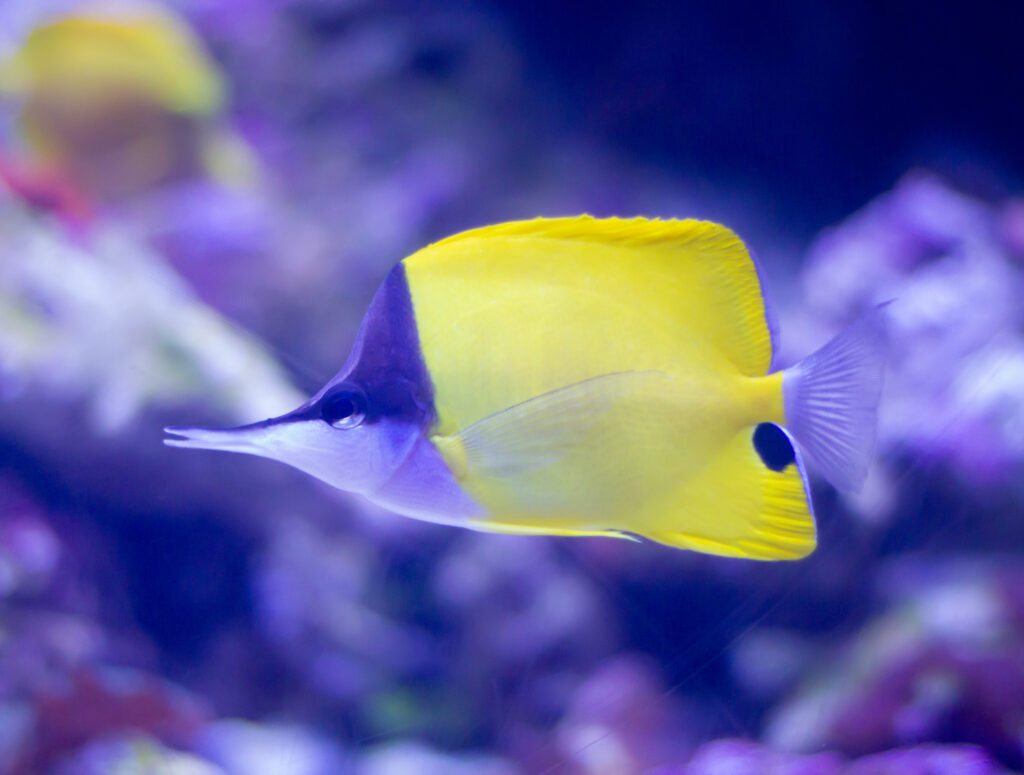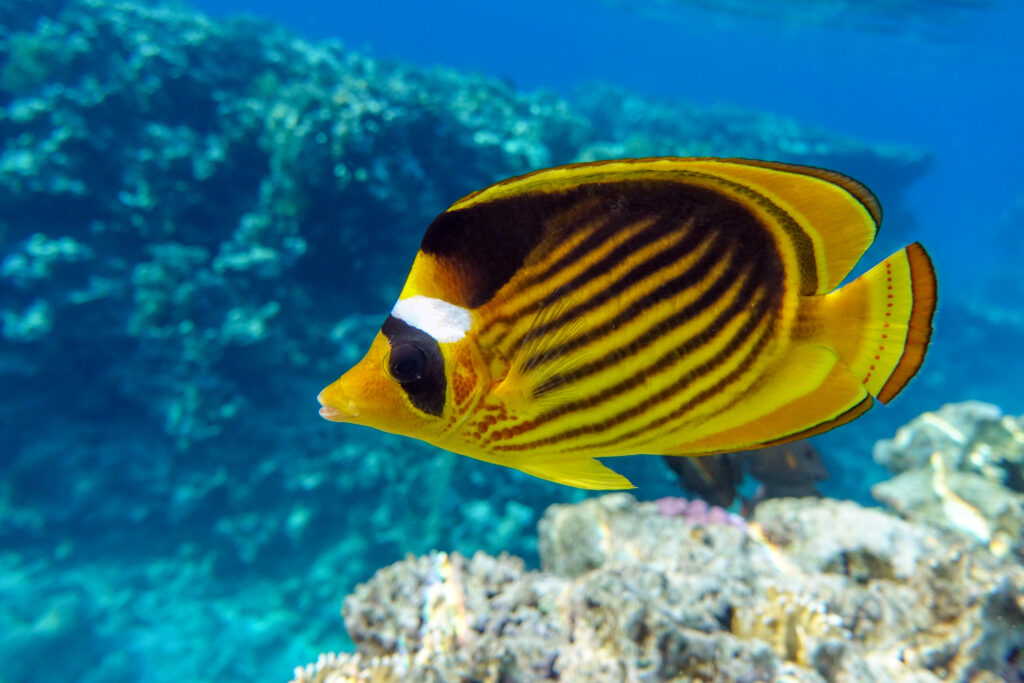Whether you’re exploring the Great Barrier Reef or the Amazon Reef, butterfly fish are one of the most commonly spotted creatures in our tropical habitats. With their beautiful array of colours, patterns and sizes, they’re popular with experts, scuba divers and aquarium visitors alike.
Let’s celebrate this fish with an in-depth fact file including everything from their appearance to their habitat and diet.
What are butterfly fish?
Butterfly fish (Chaetodontidae) are a type of tropical marine fish, and over 100 species variations are known to exist around the world. The exact number of species is still unknown, with many experts suggesting there could still be more to discover.
Let’s get more familiar with this fish species…
What do butterfly fish look like?
At only around 8 inches, butterflyfish are relatively small compared to other creatures in their tropical reef environments. Their bright markings help them stand out, though, with variations like yellow, blue and orange being common. Some can even change their colours to camouflage with their surroundings, which is part of the reason why scientists aren’t sure of the exact number of species.
Butterfly fish can sometimes be mistaken for angelfish because of their similar shape. As cousins in the marine world, they have the same round, flat body, a similar spiny dorsal fin and a long snout.
The easiest way to tell the two apart is to look for a black dot on the flank of the body. All butterflyfish have a black eye-like dot on their bodies, which is typically used to confuse predators who will have a harder time working out which direction they’re swimming in.
Where do butterfly fish live?

Most butterfly fish spend their time swimming around coral reefs, preferring warmer tropical habitats. The coral provides them with shelter and even food for some species.
And as one of the most widespread tropical fish species on Earth, there aren’t many places you won’t find them. The biggest concentration of butterfly fish is thought to be in the Indo-Pacific region.
Behaviour of butterfly fish
While some butterfly fish remain solitary until they find a mate to stick with for life, some travel in small groups known as schools, where they communicate through noises, body language and even by changing colour to show dominance when in trouble.
Once a butterfly fish has a partner, they rarely leave each other’s sides – if one goes missing, the other will search until they find one another again!
What do butterfly fish eat?
These colourful fish are classified as omnivorous and eat throughout the day, making them diurnal. They have varied diets, including everything from small invertebrates like worms to plankton, algae and coral polyps.
Thanks to their protruding mouths and comb-like teeth, butterfly fish can easily access even the tiniest of gaps in coral reef systems where their food might be hiding.
Are butterfly fish endangered?
Unfortunately, some species of butterflyfish are considered to be vulnerable largely due to habitat loss. Ocean pollution is causing damage to the world’s coral reef systems, meaning they’re becoming smaller and are less able to support the marine creatures that would usually thrive here. As their primary habitat, butterfly fish are, as a result, slowly declining in population.
Supporting conservation efforts and understanding why our reefs are so important can help us protect butterfly fish and other creatures that call these habitats their home for the future.
Alongside the degradation of their habitats, they also face threats from overfishing, which is also causing a decline in the number of butterfly fish species worldwide.
See butterfly fish at Hastings Aquarium

So, we know that these fish can be found in the world’s coral reefs, but what if you can’t travel to one and see them in their natural habitat?
At Hastings Aquarium, we have plenty of butterflyfish species in our Ocean Tank exhibit for you to meet, including the pearlscale butterflyfish found in the Western Pacific Ocean around Indonesia and the Philippines, and the yellow and black raccoon butterflyfish, which gets its name from the resemblance of the markings on its head to a raccoon’s markings.
Among others like the dot dash butterfly, teardrop butterflyfish and copperbanded butterflyfish, you can see all the different colour variations these tropical fish come in and learn more exciting facts from our experts.
Book your tickets today and see how many of our butterfly fish species you can spot at Hastings Aquarium, where you can also attend our expert animal talks and learn all about the world’s most fascinating marine life.
